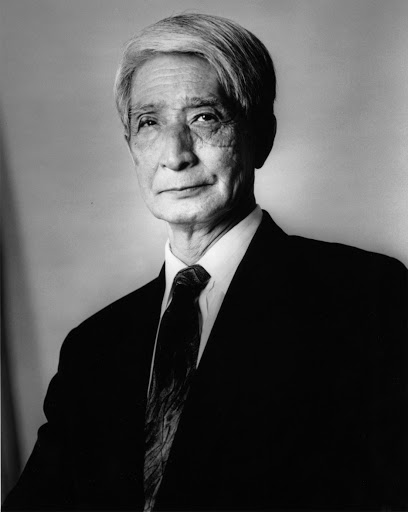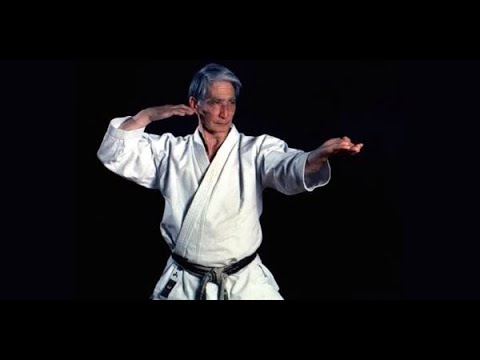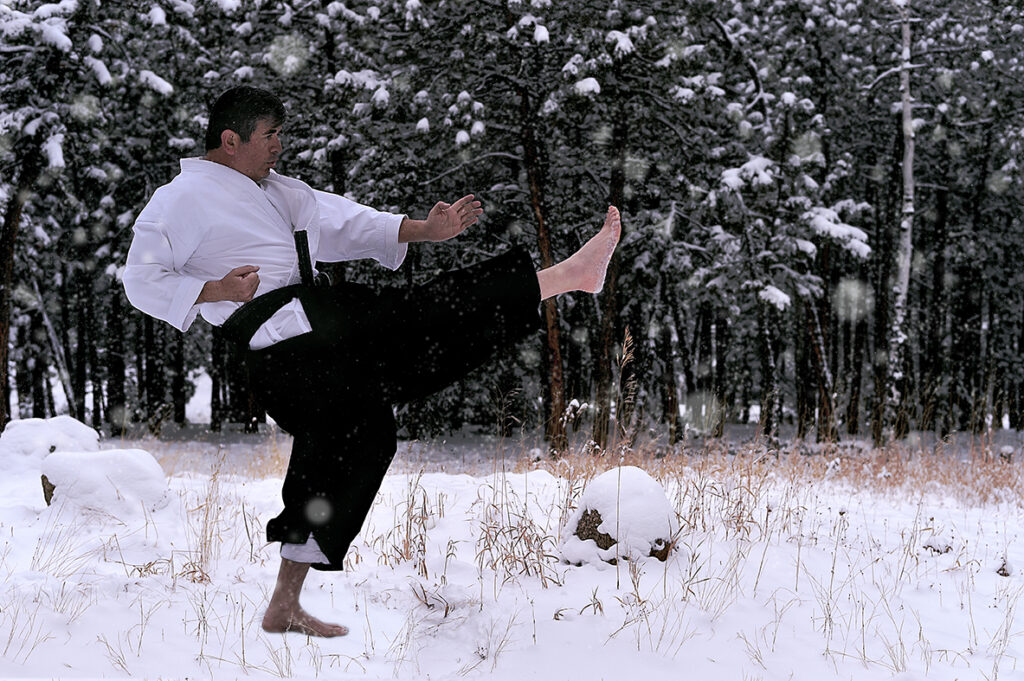Sensei and Zen Master Ivan D. Mayor; 6th DAN Karate-do Shotokan, began his martial arts training in 1962. He arrived in Colombia in 1973 and founded the Antioquia League and co-founded the Colombian Karate-do Federation.
In 2010, he founded Zen in Movimiento, a school that teaches students how to use their mind and body at maximum concentration in movement. He also teaches Zen meditation techniques that use Ki breathing. He is the creator of the concept of AiKi, which is the union of inner energy. He has been living in the United States since 2003.
Thank you to all the martial arts masters and professionals who will be part of the Zen in Movimiento team. We will bring all students a message full of peace, love, and commitment to make a change in life together at the Zen OnLine school.
Tribute to Sensei Nishiyama; my master
Sensei Master Hidetaka Nishiyama played a fundamental role in the development of Karate-Do in Colombia. All of us senseis traveled to his Summer Camps in San Diego, California, and he also visited our country many times, especially Medellín.
Sensei Nishiyama was born in Tokyo in 1928, and at the age of 5, he began practicing Kendo under the meticulous instruction of his father, a master of that discipline. Years later, he continued on the path of Budo with Judo. In 1943, he met Sensei Gichin Funakoshi (founder of Karate as we understand it today), with whom he achieved his 1st Dan black belt after three years of practice.
He is a legend in Karate who devoted his entire life to the practice of the martial art and the principles of Budo. For this reason, in 1960, he published his first book titled “The Art of Empty-Hand Combat,” which, to this day, is considered a comprehensive and extensive work explaining the foundations of Karate and even martial arts in general.
Among his achievements, he founded the Japan Karate Association (JKA), where he was chosen as a director and named a member of the martial arts combat staff of the group. There, he trained with masters such as Funakoshi, Masatoshi Nakayama, and Isao Obata in Judo, Karate, and Aikido. In 1973, he also co-founded the Pan American Karate Union (PAKU) and the International Amateur Karate Federation (IAKF), and provided support for the establishment of the South American Karate Confederation and the North American Karate Confederation in 1981. He authored materials for tournaments and competitions.
In November 2000, he was internationally recognized by the Japanese Emperor with the “Kun-Yoto” Medal of Merit and was decorated with the “Zuiho-sho” Sacred Order for his contribution to the promotion of Japanese culture through traditional Karate. In the last years of his life, he taught classes at the National Karate Institute (NKI) and conducted seminars around the world, offering age and gender-inclusive sessions. To all of them, Sensei Nishiyama imparted his latest and most recent creation: an innovative training system based on the principles of Budo, applicable to all styles of Karate. His final words were: “…in this stage of my life, I am very proud to have completed a lifelong project and to have the confidence that we can now spread true Traditional Karate to future generations. Now, it is your turn to face new challenges and embrace the many opportunities that this form of knowledge has to offer. Thus, traditional Karate will continue its growth and development for the benefit and higher understanding on both physical and mental levels…”
Sensei Hidetaka Nishiyama passed away on November 8, 2008, due to a sudden cancer, but he will forever live on in the hearts of his wife, family, and martial artists. Much more than a myth, he is an example that must remain alive in the consciousness of the entire martial community.


The Whisper of Silence.
In a small corner of the vast human experience, there exists a path that leads to serenity, mental calmness, and fullness in life. This path, known as the Zen practice, is revealed to those who seek inner peace and wisdom deep within themselves.
The Beginning of the Journey The path of Zen begins with a whisper, a silent invitation to look inward. In the constant noise of modern life, this whisper is often drowned out by worries, responsibilities, and daily distractions. However, for those who tune in to this gentle call, the journey toward profound understanding and serenity has begun.
The Art of Mindfulness Zen practice focuses on the art of mindfulness, a discipline that brings us to a state of presence in the present moment. At first, it may seem like a challenging task. Our thoughts jump around like restless butterflies. But with time and consistent practice, we begin to notice a silent transformation within ourselves.
Connection with the Breath One of the pillars of Zen practice is the connection with the breath. Ki breathing becomes our anchor in the present, for without Ki breathing, there would be no life. It’s a constant reminder of life flowing through us with every inhalation and exhalation. By observing the breath mindfully, we learn to calm the turbulent waters of the mind and find refuge in inner tranquility.
Discovering Inner Silence As we delve deeper into our practice, we start to discover an inner silence that transcends the noise of the outside world. This silence is not a cold void but a warm and welcoming space where we find peace and clarity. In this state of being, answers to our deepest questions unfold gently, like lotus petals in a serene pond.
The Gateway to the Unknown Zen practice leads us to a gateway that opens to the unknown. Beyond words and concepts, beyond the thinking mind, we find an experience that is difficult to describe but profoundly meaningful. It’s a place where duality dissolves, where the self and the other self merge into harmonious unity.
The Promise of Serenity In summary, as we embark on our Zen journey, it introduces us to the whisper of silence, the possibility of inner serenity, and the promise of deeper understanding. As we progress on this path, we’ll explore how this practice impacts every facet of our lives, from how we face stress to how we find a greater sense of authenticity and purpose in every moment. This is the beginning of a journey into the depths of our being.





Breathing in Zen Meditation:
Breathing KI is a powerful tool in Zen meditation. It’s used as a focal point to anchor the mind in the present moment. Through mindful observation of the breath, concentration and mental calmness are nurtured, allowing the mind to quiet down and detach from daily distractions. Here are some key aspects of breathing in Zen meditation:
Natural Breathing: Instead of attempting to alter your breath, Zen meditation encourages observing it as it naturally is. Techniques involving deep inhalation and exhalation are used to create a ventral reaction at the culmination of the exhalation. Pay attention to how the air flows in a controlled manner as you inhale and exhale.
Focus and Mindfulness: Breathing becomes a consistent focal point. By centering your attention on the sensations of the breath and controlling the diaphragm – which allows you to manage the air quantity and create ventral pressure for an internal reaction – you seek a point of support toward the seat where you’re meditating. This trains your mind to stay in the present rather than wander into thoughts about the past or future.
Observation Zone: You can consciously choose where in the body you want to focus as you breathe. This should involve the sensation of creating an internal explosion through ventral pressure, transforming air into energy that can be sent throughout your body, filling it with mental and physical power. Air comes in through the nostrils and exits through the mouth, feeling the movement of the belly and abdomen expanding and contracting, or even the sensation in the throat. This choice is personal and can vary from one session to another.
Non-Judgment: As you practice observing the breath, thoughts, emotions, or distractions naturally arise. The key is not to judge these events. Simply observe their emergence and then gently redirect your attention back to the breath.
Rhythm and Depth: Zen meditation doesn’t impose any specific rhythm or depth of breath. The idea is to allow the breath to flow naturally, without interference or attempts to control it.
Practice of Persistence: The mind may repeatedly wander during meditation. Instead of being discouraged by this, consider it an opportunity to train your attention. Each time you notice you’ve been distracted, gently bring your focus back to the breath.
Beyond Meditation: As we integrate mindful attention to the breath into your meditative practice, you might also start noticing moments of presence and calmness outside of meditation. This is part of the benefit of cultivating mindfulness in everyday life. Breathing in Zen meditation is more than a simple physiological act; it’s a bridge to awareness of the present moment. Through consistent practice, you can develop a deepe
That is the Ki in the daily movement?We can increase theenergy inside breathing properly?
In Japanese philosophy and in many Eastern traditions, “Ki” is considered a vital energy that flows through all living things and is present in the universe. This energy is known by different names in different cultures: “Qi” in traditional Chinese medicine, “Prana” in the Hindu tradition, and so on. In the context of everyday movement, the concept of Ki refers to the awareness and conscious intention that is applied when performing various activities.
In everyday movement, such as walking, working, exercising, and doing housework, the notion of Ki can be applied to focus attention on how each action is performed. This involves being aware of the way the body and mind move in harmony, using the breath and intention to improve the quality and efficiency of movement.
Regarding the relationship between breathing and increasing internal energy, many traditional and contemporary practices emphasize the importance of proper breathing to increase vitality and internal energy. Deep, conscious breathing can have several benefits:
- Oxygenation: Proper breathing provides increased amounts of oxygen to the body’s cells, which can increase energy and mental clarity.
- Relaxation: Deep, mindful breathing can reduce stress and tension, which in turn contributes to increased energy.
- Circulation: Deep, slow breathing can improve blood circulation and the flow of energy in the body.
- Awareness and Focus: Practicing mindful breathing can increase concentration and awareness in the present moment, which can lead to a greater sense of energy.
- Energy balance: Some meditation practices and disciplines such as Tai Chi and Qi Gong are based on breathing techniques to regulate and balance the flow of Ki or internal energy.
In summary, conscious and proper breathing can be a valuable tool to increase inner energy and promote greater well-being in everyday life. However, I recommend that you enter the Zen OnLine School and take the first steps in the mental and physical change that you will receive in exchange for the effort you make, this is life and change. I wait for you at the School… OSS.
Ivan Mayor
Zen & Karate Master


AI KI y KIAI
KI es la energía y poder interior que todo ser tiene y en especial el ser humano que puede incrementarla
AIKI es la union de la energía y poder interior.
KIAI es el Poder Interior al ejecutar y culminar una técnica o movimiento, multiplicando el efecto al hacerlo.
KIME es la union de la mente + la energía Ki + la condición técnica y física del movimiento.
KIHON es el procedimiento básico de asimilar correctamente el concepto técnico y la buena forma de hacerlo.
HENG-O es el poder mental que incrementa el instante o momento del impacto, donde no hay reversa; se da.
LA RESPIRACION KI ALTA PULMONAR Y BAJA VENTRAL
La Respiración Ki en Zen en Movimiento es la base de adquirir e incrementar el control de la fuerza interior que todo ser viviente posee.
Con Zen la canalizaremos y aprenderemos hacer correctamente la Respiración y llevarla a los pulmones y al vientre; al centro; al HARA donde haremos que incremente su poder de alimentar todas nuestras células del cuerpo.
Es ahi donde podremos utilizarla en todos los movimientos cotidianos y en especial en aquellos específicos donde necesitamos una destreza física y mental en su ejecución.
AI-KI UNION DE LA ENERGIA INTERNA
AI-KI es la forma como unimos todas las energias que el cuerpo puede producir al generar el movimiento normal de cada situación diaria que vivimos, a su vez nos permite el Balance físico y el equilibrio mental en el movimiento, que debemos unir para realizar con destreza cualquier acción que necesite una psicomotricidad fina y especifica con la dificultad de hacerlo.
El poder de la reacción esta en la union interna de todas las energía que darán poder a los músculos al realizar el esfuerzo


